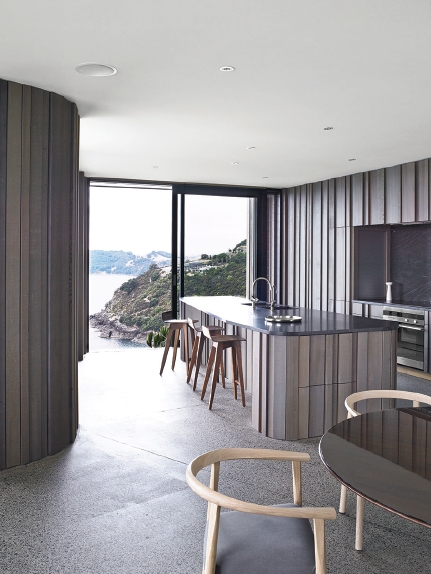The traditional kitchen hasn’t just evolved — it has also moved into the living area and in many cases merged with it. As 2019 begins, Fisher & Paykel lists kitchen design trends to embrace in this new year.
Kitchens as an extension of the living area
In the past, kitchens were usually located at the back of the house and designed as a separate space to be used by one person. Over time, however, the space has gradually moved forward into the spotlight, to become the heart of the home.
As well as this literal shift, kitchens have also shifted in function — no longer just a place where food is prepared but also where it is shared. It has become a meeting place for the family: a place to work, entertain and socialise. And sometimes, we still prepare food in our kitchens — but even that is changing.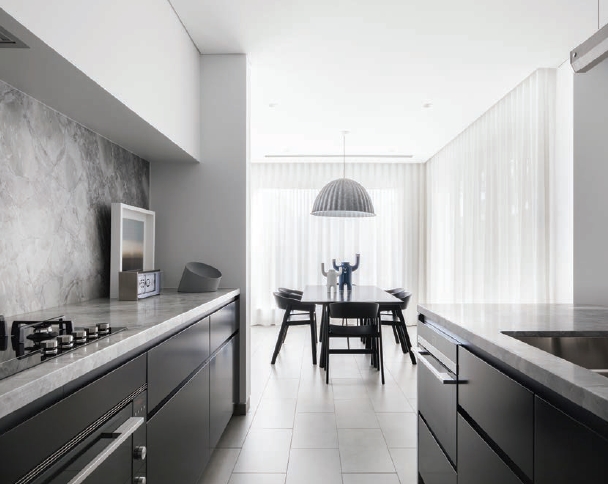
Fisher & Paykel has identified a strong trend in kitchen location, layout and design through their collaborative work with architects and designers, who are now increasingly considering the kitchen as a piece of furniture that inhabits the living space.
This means kitchens are being designed with a strong emphasis on integration, detailing and customization, which is particularly relevant as kitchens increasingly become the central focus of modern living, providing functional and adaptable spaces. From compact apartments to spacious family homes, they are gradually seeing the line between the kitchen, dining and lounge areas blur.
Seamless appliance integration
The practice of integrating appliances has been a major movement in the kitchen design world for several years and has become increasingly popular in Australia and New Zealand kitchens.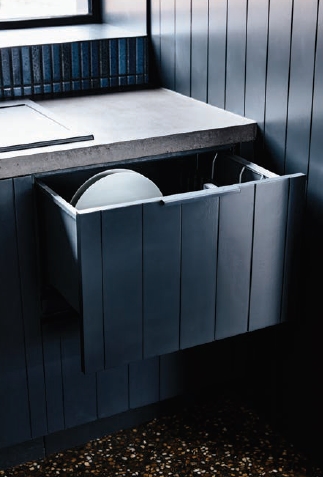
Selected Fisher & Paykel refrigerators, CoolDrawerTM Multi-temperature Drawers, DishDrawerTM Dishwashers, and rangehoods can be installed with custom panels matched to your cabinetry, which gives the kitchen a seamless appearance. This allows for some serious design freedom where they can choose what to hide, and what to show or use as a feature product. In smaller spaces or those with an open living plan, this integration can provide the opportunity to have more or larger appliances without them overwhelming the kitchen or living area; instead the joinery can be designed to help the kitchen feel like part of a cohesive, larger space.
Distributed kitchen designs
In traditional kitchens, a single cook worked between the three stations of the stove, sink and refrigerator, which were arranged closely to give quick, easy access to each with minimal movement.
Fisher & Paykel have observed how the ways we are using our kitchens have changed over time. These days, more than one cook might be working simultaneously, or the kitchen will double as a space for entertaining guests.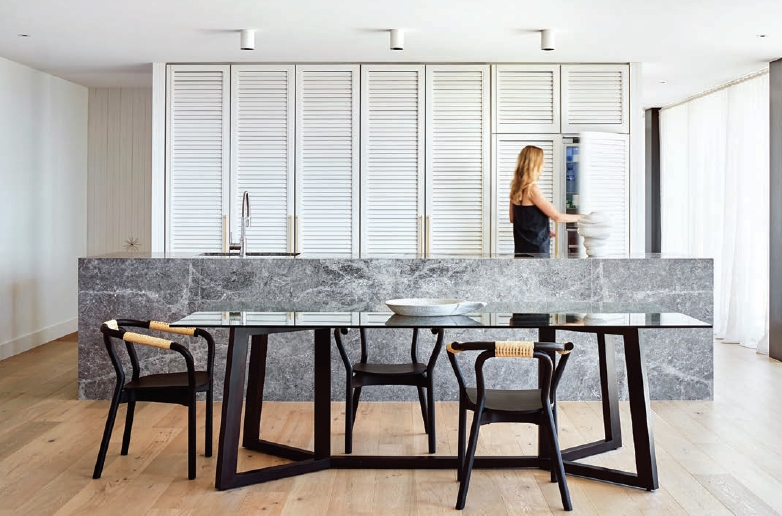
People might want to heat up leftovers for dinner one day, or cook a gastronomic feast the next, so kitchens need to be flexible and do many things well.
In contrast to the purely functional, out-of-sight cooking areas of old, today’s kitchen is also on show to guests and family alike, so design aesthetics matter more. Thinking ‘outside the triangle’ has given their designers opportunities to innovate. After all, not one size fits all.
Fisher & Paykel has designed a family of appliances that can be distributed throughout the kitchen to support contemporary patterns of use. Good kitchen design allocates areas in which specific tasks are grouped. Areas for preparation, washing, storage and baking fall into cooking zones, where as an entertaining or breakfast area might have its own zone.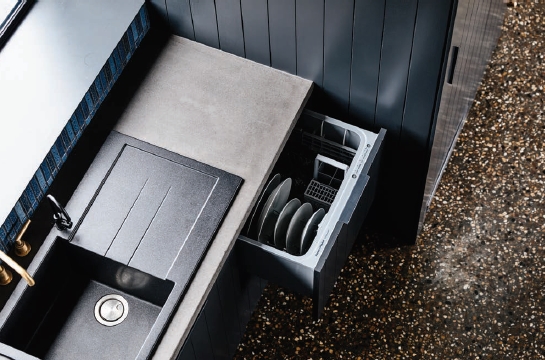
For example, you can install a CoolDrawer™ Multi-temperature Drawer for drinks near the dining table, and perhaps a DishDrawer™ Dishwasher for crockery by the sink, with another for glasses by the bar. This is a design concept called ‘distributed appliances’, allowing you to configure the kitchen to suit the way you work and live.
Intuitive technology
Intuitive technology in kitchen appliances promises to make your life easier. An example of this is Fisher & Paykel’s Integrated Columns Refrigeration series featuring Variable Temperature Zone technology that gives the customer a new level of storage flexibility. The new series features a range of modular fridge (610mm and 762mm) and freezer elements (457mm, 610mm, 762mm) that can be installed side by side or independently to each other throughout the kitchen. Customers can choose to personalise their temperature settings in the fridge Column between Fridge, Chill, and Pantry food modes or Freezer, Soft-Freeze and Deep-Freeze options in the freezer Column. Each mode is optimised to provide optimal foodcare, suiting the way you shop, cook, and entertain.


